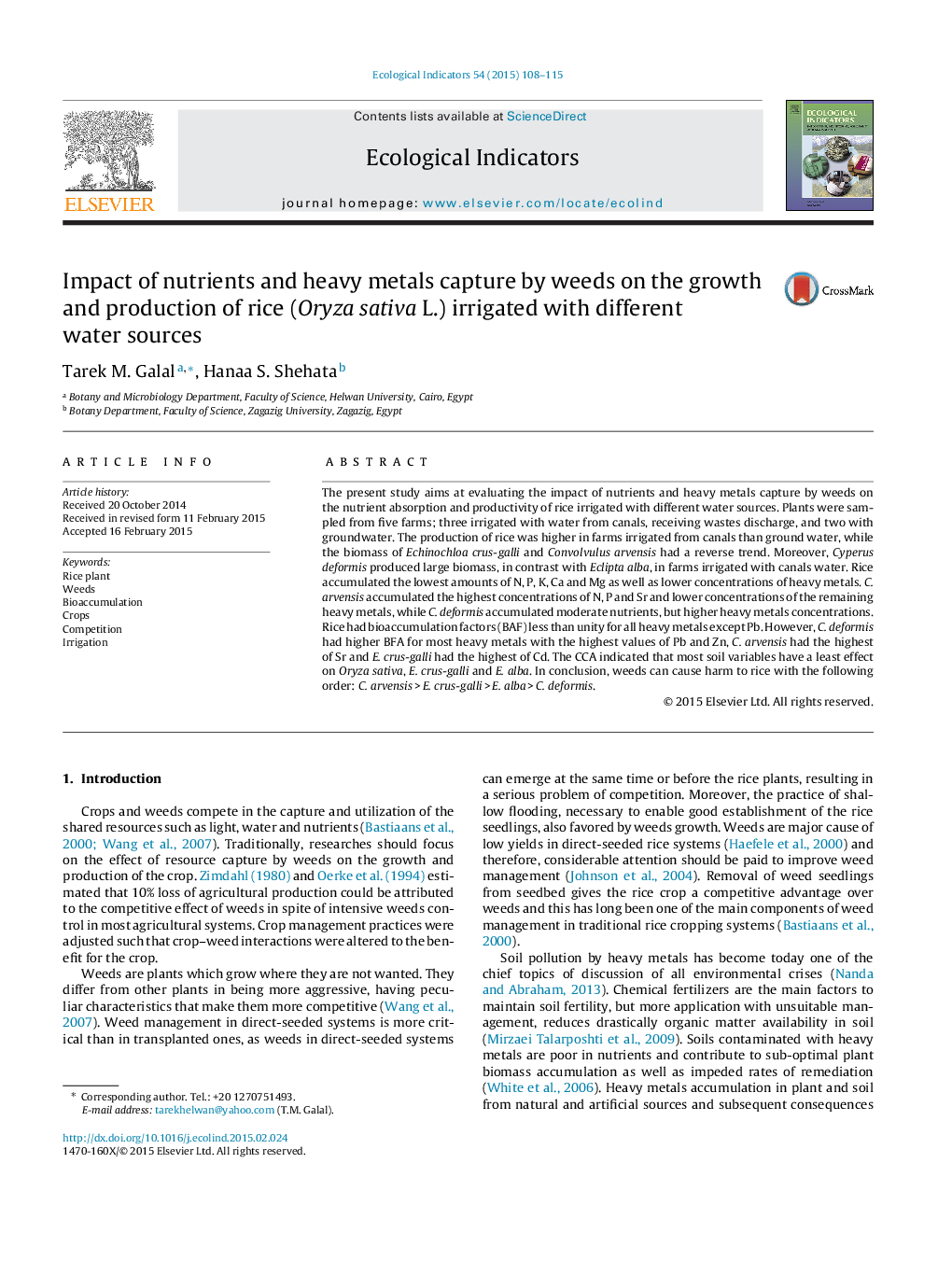| Article ID | Journal | Published Year | Pages | File Type |
|---|---|---|---|---|
| 6294476 | Ecological Indicators | 2015 | 8 Pages |
Abstract
The present study aims at evaluating the impact of nutrients and heavy metals capture by weeds on the nutrient absorption and productivity of rice irrigated with different water sources. Plants were sampled from five farms; three irrigated with water from canals, receiving wastes discharge, and two with groundwater. The production of rice was higher in farms irrigated from canals than ground water, while the biomass of Echinochloa crus-galli and Convolvulus arvensis had a reverse trend. Moreover, Cyperus deformis produced large biomass, in contrast with Eclipta alba, in farms irrigated with canals water. Rice accumulated the lowest amounts of N, P, K, Ca and Mg as well as lower concentrations of heavy metals. C. arvensis accumulated the highest concentrations of N, P and Sr and lower concentrations of the remaining heavy metals, while C. deformis accumulated moderate nutrients, but higher heavy metals concentrations. Rice had bioaccumulation factors (BAF) less than unity for all heavy metals except Pb. However, C. deformis had higher BFA for most heavy metals with the highest values of Pb and Zn, C. arvensis had the highest of Sr and E. crus-galli had the highest of Cd. The CCA indicated that most soil variables have a least effect on Oryza sativa, E. crus-galli and E. alba. In conclusion, weeds can cause harm to rice with the following order: C. arvensis > E. crus-galli > E. alba > C. deformis.
Related Topics
Life Sciences
Agricultural and Biological Sciences
Ecology, Evolution, Behavior and Systematics
Authors
Tarek M. Galal, Hanaa S. Shehata,
